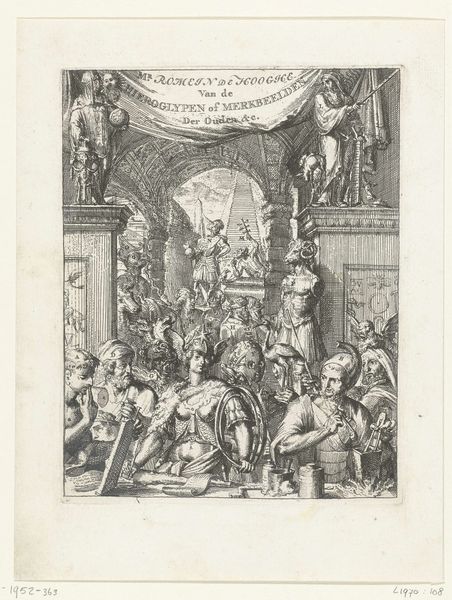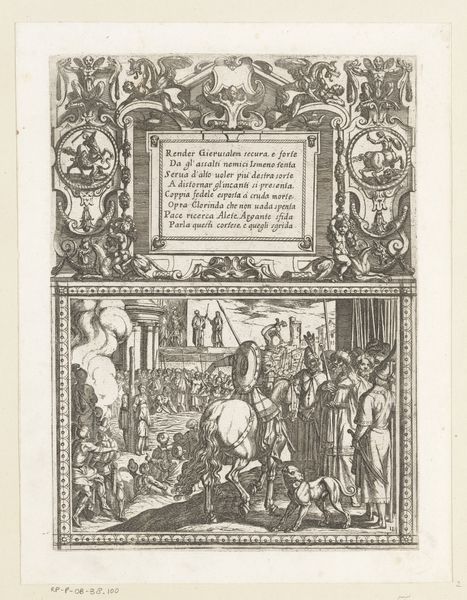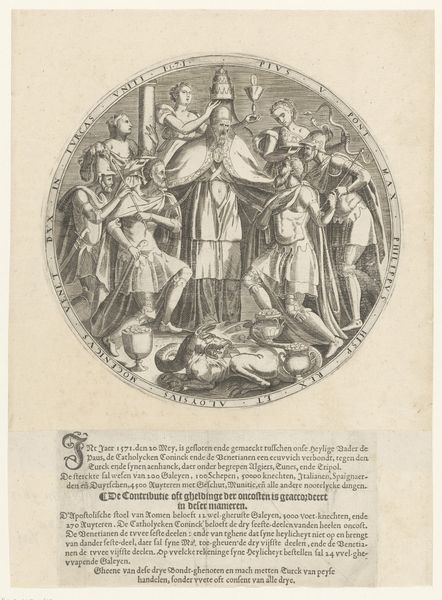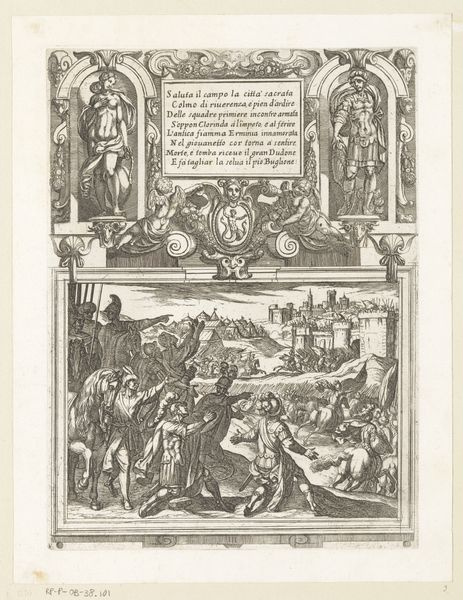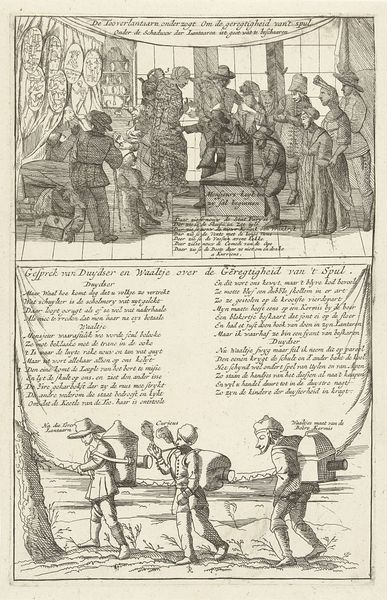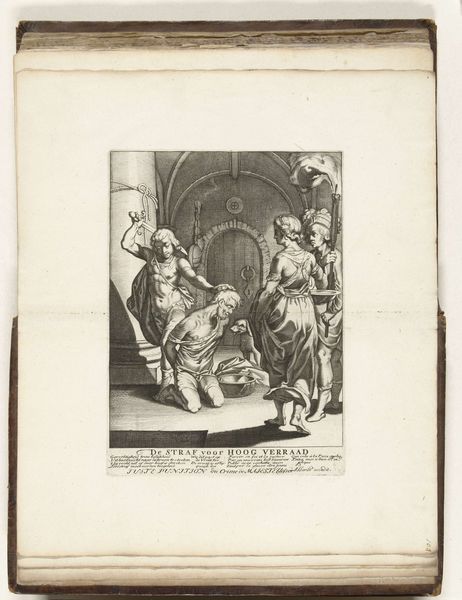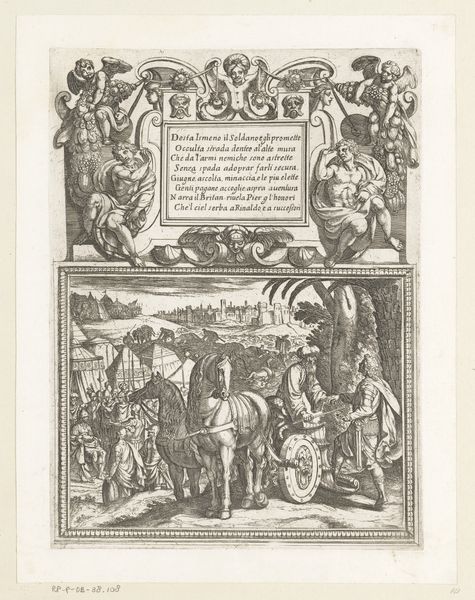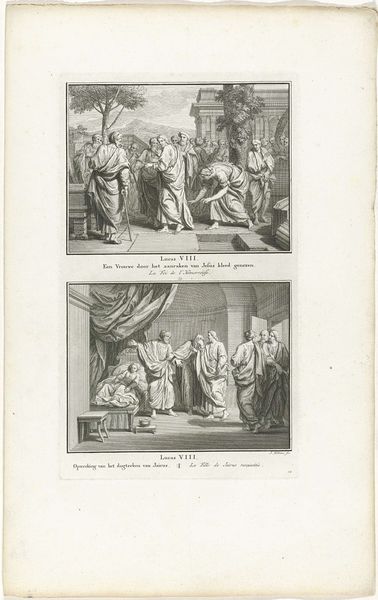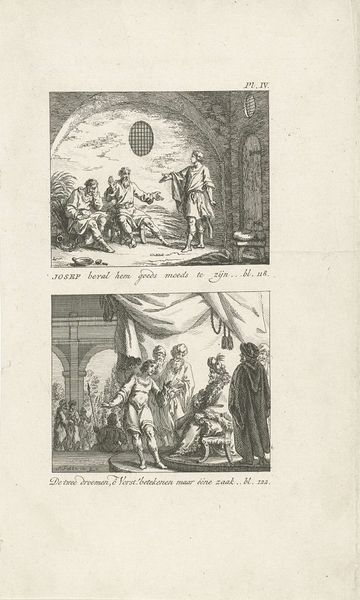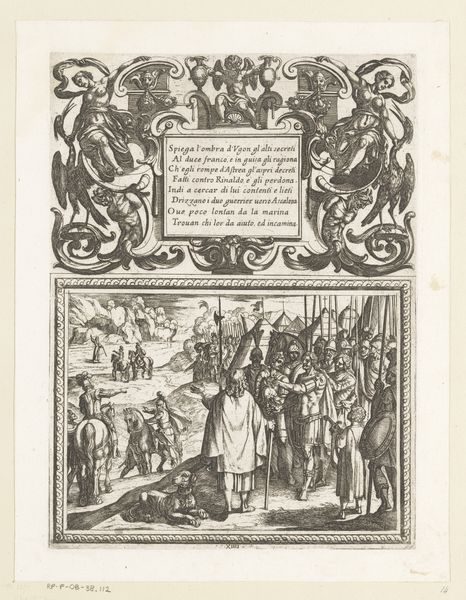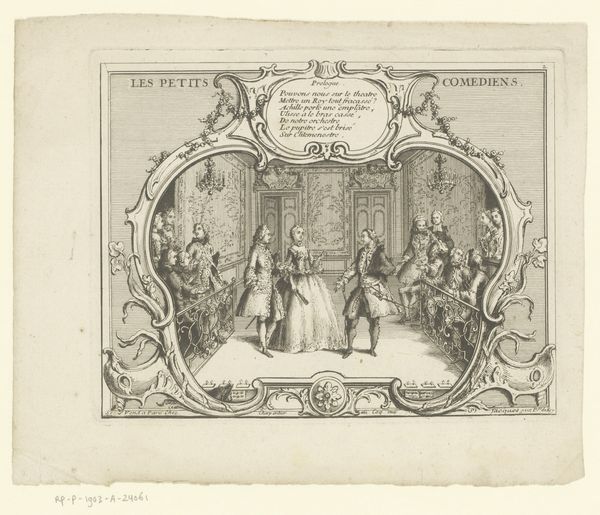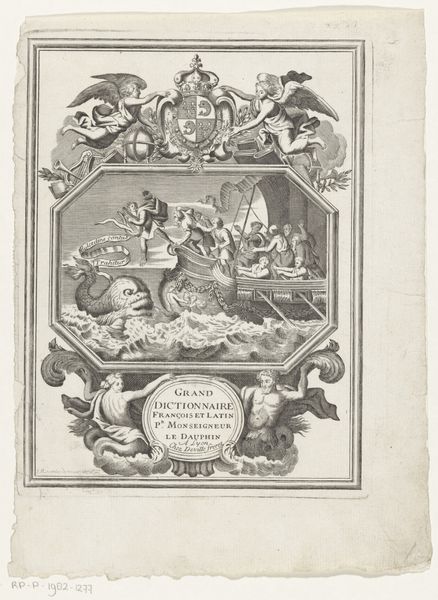
print, paper, ink, engraving
#
portrait
#
narrative-art
#
ink paper printed
# print
#
paper
#
ink
#
history-painting
#
engraving
Dimensions: height 325 mm, width 210 mm
Copyright: Rijks Museum: Open Domain
Curator: So, we're looking at a print here at the Rijksmuseum titled, "Blad met titelprent en de dood van Maria Tudor in 1558," dating back to 1711 and attributed to Anonymous. It's rendered in ink on paper. What's grabbing you about this piece? Editor: Honestly? It feels a little…distant. Cold, maybe? It's the sort of detached, historical tableau I associate with looking back through the wrong end of a telescope. Lots of details, but I don't feel close to any of them. Does that make sense? Curator: It does. Part of that distance is intentional, I think. Consider the context: depictions of royal deaths were often highly staged, intended to project power even in moments of vulnerability. And this being a later depiction, there's a layer of historical interpretation happening. The print circulated broadly, shaping popular understanding of Mary Tudor, even after her death. Editor: The allegorical top image seems to contrast to the main depiction with the more subdued, interior scene of the queen dying in her bedchamber surrounded by attendants. The cherubs up top feels almost gleeful. They're floating and holding heraldic shields, seemingly oblivious to the somber scene below. Is there an inscription? I cannot read the original Dutch. Curator: Yes, the upper section serves as a title print, containing dedicatory text alongside those symbolic figures and heraldry, framing it all. This element was to give honor to someone to obtain some favor or reward by an institution of high society, so there is always an underlying power context. Down below we see Mary Tudor on her deathbed. Notice the contrast between the formality of the setting and what I imagine was the reality of a painful passing. Editor: It's a fascinating mix, really. The idealized title versus the attempt at realistic reportage below. And that detachment I felt? Maybe it's not coldness, but a deliberate framing of power—a visual argument about how history is constructed, performed, even. Curator: Precisely. It is that very framing, that performance, which this print is documenting and perpetuating in the collective imagination. The engraving method also lends a sharp precision, highlighting textures. Editor: Looking again, I'm starting to appreciate the technical skill. The cross-hatching creates some pretty impressive shading. And it has got me thinking about all the stories these two little images might hold about a person, a reign, a place in history. Thank you, I'm beginning to see through it a bit.
Comments
No comments
Be the first to comment and join the conversation on the ultimate creative platform.
